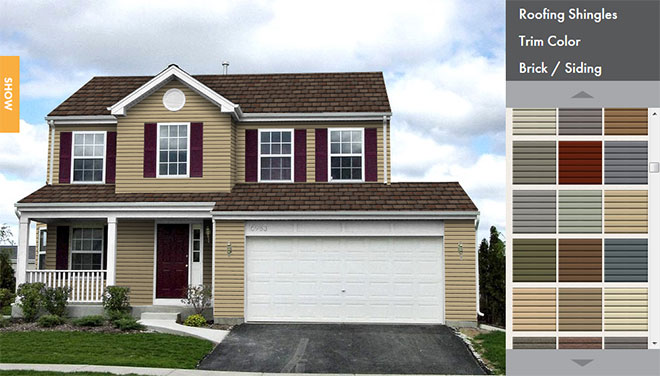Association Property Management & Maintenance Experts – Townhomes and Condominiums
As one of the most sustainable roofing materials used today in the construction industry, EPDM offers low life cycle costs. EPDM roofing systems therefore offer the greatest economic value in the low-slope commercial roofing industry. Less frequent replacement results in decreased building disruptions and even creates reduced impact on the environment.
Advances In EPDM’s Performance and Cost Effectiveness Prompt Property Managers To Take Notice
As with the institutional and commercial buildings they protect, roofing systems have been in a continual state of technological advancement for the past 20 years. One prevalent example of this trend is the ongoing improvement of ethylene propylene diene terpolymer, EPDM roofing systems. Commonly called rubber roofs or membrane roofs, EPDM systems have become the most commonly used roofs for both re-roofing and new construction projects in the United States.
About 28 percent of new construction and 24 percent of re-roofing projects incorporate EPDM roofing membrane systems, according to the National Roofing Contractors Association (NRCA). Considering the number of available roofing system choices, this market share illustrates the faith that building owners, design professionals, and in-house maintenance and engineering managers place in EPDM.
The EPDM rubber roofing membrane is an elastomeric polymer synthesized with these components:
Ø Clay for fire resistance and dimensional stability
Ø Carbon black to increase tear strength and resistance to ultraviolet light
Ø Process oils for flexibility
Ø Curing agents for vulcanization
Membranes are formed as two plies and are laminated together to form one ply, in sheet sizes up to 50 feet by 200 feet. Next, the membrane is cured under heat, steam and pressure in an autoclave, and membranes are produced in thicknesses of 45, 60, 75 and 90 mils. EPDM systems in recent years have been manufactured with an option of reinforcements with high-tenacity polyester treated for wick resistance.
Benefits
Among the most attractive features of EPDM roofing, is its ability to retain its physical characteristics throughout its service life. EPDM compounds have exhibited a high degree of stability under conditions of exposure to ultraviolet light, as well as extremes in high and low temperatures. This benefit allows managers to specify and install EPDM membranes in any geographic area of the country. EPDM’s strength and overall system performance also help to protect the integrity of a building and the potentially millions of dollars of assets it contains.
The EPDM membrane also offers design flexibility, making it an attractive option for diverse applications. Among the earliest designs was the ballasted roof, in which the membrane is loosely laid over the substrate or insulation and covered with a layer of ballast—either stone or pavers—to keep the membrane in place when exposed to wind uplift.
Other common application options include fully adhering the membrane, which involves using a specified bonding agent to adhere the membrane typically to rigid insulation boards that are anchored to the deck. Membranes also can be mechanically fastened to a suitable substrate or roof deck. These options eliminate the weight of the ballast and offer lightweight solutions for new or retrofit applications.
Another benefit of EPDM — arguably its most important — is the membrane’s flexibility, which allows managers to specify it for a variety of roofing applications, from low-sloped roof decks to steep-sloped barrel-roof systems. Because of its adhesive-style application and the ability of the material to maintain its physical characteristics, EPDM is ideal for complex roofing projects.
One of the most attractive qualities of EPDM roofing is its relatively low installation cost, compared to alternative roofing systems. The installation of the roofing membrane is performed without any heat, dangerous fumes or heavy machinery. Aside from adhesive application equipment, no special equipment is required to lay down EPDM panels.
Because of its relatively easy installation process, contractor labor costs are significantly lower when installing an EPDM roof. Combined with long-term warranties — some up to 30 years — and the ability to install the system easily over an existing roof system, EPDM often is an attractive option for either new roofing or re-roofing projects.
Product Innovations
EPDM membrane formulations have remained relatively constant for the past 30 years, with roof systems installed in the 1970s still performing well. Even so, EPDM manufacturers remain committed to continuous product innovations. In response to technological advancements, membrane research and contractor requests for more ergonomic products, EPDM accessory products continue to evolve to meet the demands of the industry.
The innovation of seam tapes in the 1980s to replace liquid adhesives has resulted in greater productivity for the contractor and enhanced performance for the roof system and building user. Self-adhering components (components that have factory-applied adhesive tape) have increased roof system quality, especially in more problematic areas such as flashing installations.
The 90-mil EPDM roof system is a highly puncture-resistant and tough membrane that offers the thickest layer of monolithic waterproof protection in the roofing industry. Also, 30-year warranties are now available. This is the only long-term performance guarantee in the roofing industry and can include warranty coverage for punctures, hail damage and wind speeds of up to 100 mph.
Inspection Insights
When inspecting an existing EPDM roof system, roofing contractors, facility managers and other individuals responsible for a building’s maintenance and performance should look for these conditions:
- disbondment at seams, laps and splice areas, which can result from poor workmanship, delamination, physical damage and deterioration over time
- holes or punctures in membranes as a result of fasteners backing out of substrates or contact with heavy objects
- wrinkles in the membrane that restrict water flow, caused by inadequate attachment, curling of insulation or contraction of the membrane after application
- shrinkage of sheet membranes
- dimensional stability of the insulation that deforms or otherwise puts undue stress on the membrane
- defects in ballast, such as broken, deteriorated or missing pavers, exposed membrane due to displaced ballast, or ballast with sharp edges
- defective or improper repairs in the roof membrane
- improper application of EPDM sheets that were not allowed to relax, or recapture themselves, before perimeter securement
Workers can repair many of these defects by cleaning the membrane thoroughly and using tape products recommended by the manufacturer. Workers using any adhesive product on an EPDM membrane should completely clean the area where the adhesion will occur. Dust and dirt reduce the ability of tape to adhere to the membrane, making it possible for the repair to peel up and allow water into the substrate or insulation.
It is also important to trim or cut the edges of the EPDM patch so the splice or patch is slightly rounded, thereby leaving no sharp edges to peel back and disbond.
Coating Considerations
Cleaning an EPDM membrane thoroughly is critical before applying a coating to the membrane surface. Many experts believe that an acrylic coating applied to the membrane can extend the roof system’s service life. These acrylic coatings are available in a variety of colors.
Another benefit of coating a roof is the possibility of increased reflectivity, which benefits facilities by lowering both the roof temperature and the building’s cooling load. If a coating is properly applied on a clean surface and to the specified application thickness, it can be a great benefit in prolonging the life of the roof system.
Commercial Roofing Contractor MN
The many long-term benefits of the EPDM roofing system make it a viable roof application in various situations. In terms of installation cost, long-term warranties, life-cycle cost and overall system performance, EPDM is an attractive option that building owners and property managers would be wise to consider.
If you would like to hear more about the outstanding attributes of a Commercial EPDM Single – Ply Roofing System, an experienced Minnesota commercial roofing contractor can answer all of your questions.


 Click Here
Click Here Click Here To Use
Click Here To Use